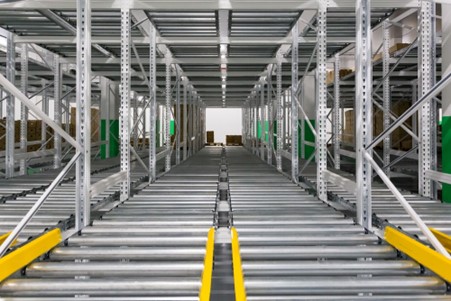Understanding Inventory Shrinkage
Running a business isn’t an easy task. When it comes to inventory, business owners need to know the exact inventory level to make informed decisions regarding safety stock level, replenishing inventory, and forecasting sales.
Imagine arriving at your shop during the festive season only to discover your inventory levels are low, despite your records showing otherwise. Inventory shrinkage is a common industry problem and, if left unaddressed, can hamper your profit levels significantly.
Let’s read more about how to calculate inventory shrinkage, its common reasons, and how to counter it.

What Are The Causes Of Inventory Shrinking?
There can be various reasons behind inventory shrinkage, with the most common reasons including:
1. Employee Theft And Shoplifting
Research shows that employee theft was responsible for more than 40% of inventory shortages. In many businesses, employees have access to every product in your business, so there are chances that any one of them will attempt to steal.
If not employees, consumers can also steal inventory. Shoplifting accounts for almost 35% of inventory shrinking – a major problem for brick and mortar stores.
2. Accounting Errors
There is a possibility that some accounting or administrative errors can happen, leading to inventory shrinking. And not just manual entries but automated inventory management systems can also result in errors due to incorrect input.
3. Damages
It is common to have accidents in warehouses while storing and placing boxes. Sometimes product reaches expiration dates, which also cause a difference in inventory records.
How To Calculate Inventory Shrinking Rate?
Calculating the inventory shrinking rate can reduce the chances of facing losses and prevent this phenomenon from happening. You can calculate the inventory shrinking and its rate by using the below equations:
Once you have the inventory shrinking value, you can calculate at which rate it is increasing or decreasing:
How To Prevent Inventory Shrinking
Proven inventory management measures and steps can significantly reduce inventory shrinking and save your revenue.
1. Increase Your Security
One way to prevent employee theft and shoplifting is to increase security and implement strict measures within your store. Security cameras, limited employee access, and legal actions can help reduce shoplifting and employee thefts.
2. Use SKU And UPC Codes
SKU and UPCs identify products, categories, groups, and other classifications. These are immensely helpful in identifying, maintaining, and recording the inventory in stores and inventory management systems.
3. Double-Check
The easiest way to prevent inventory shrinkage is not to double-check every entry and inventory. Ask your supervisor or floor manager to implement a double-checking system in every department to identify and prevent any mistakes from happening
4. Use Software For Inventory Management Automation
Traditional methods of handling stocks and inventory involve a lot of human interference, which means more chances of errors. You can use inventory management software to automate your inventory management, resulting in minimum human input and reducing inventory shrinking.
Conclusion
Inventory shrinkage cost businesses approximately $45 billion in 2015. Safe to say, it is a significant problem plaguing businesses worldwide.
The best way to curb this issue is by implementing an inventory management system and ensuring your physical security protocols are in place to negate the chances of theft.
Photo Credit: Unsplash

